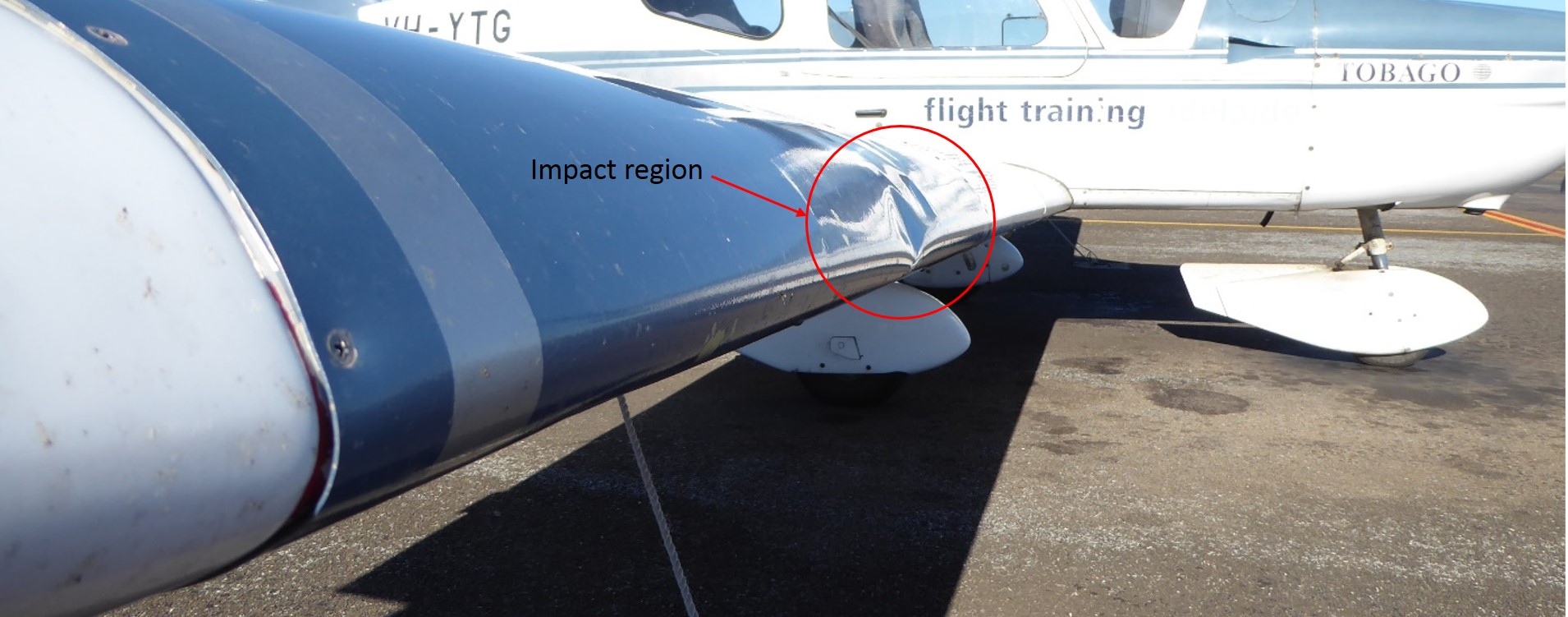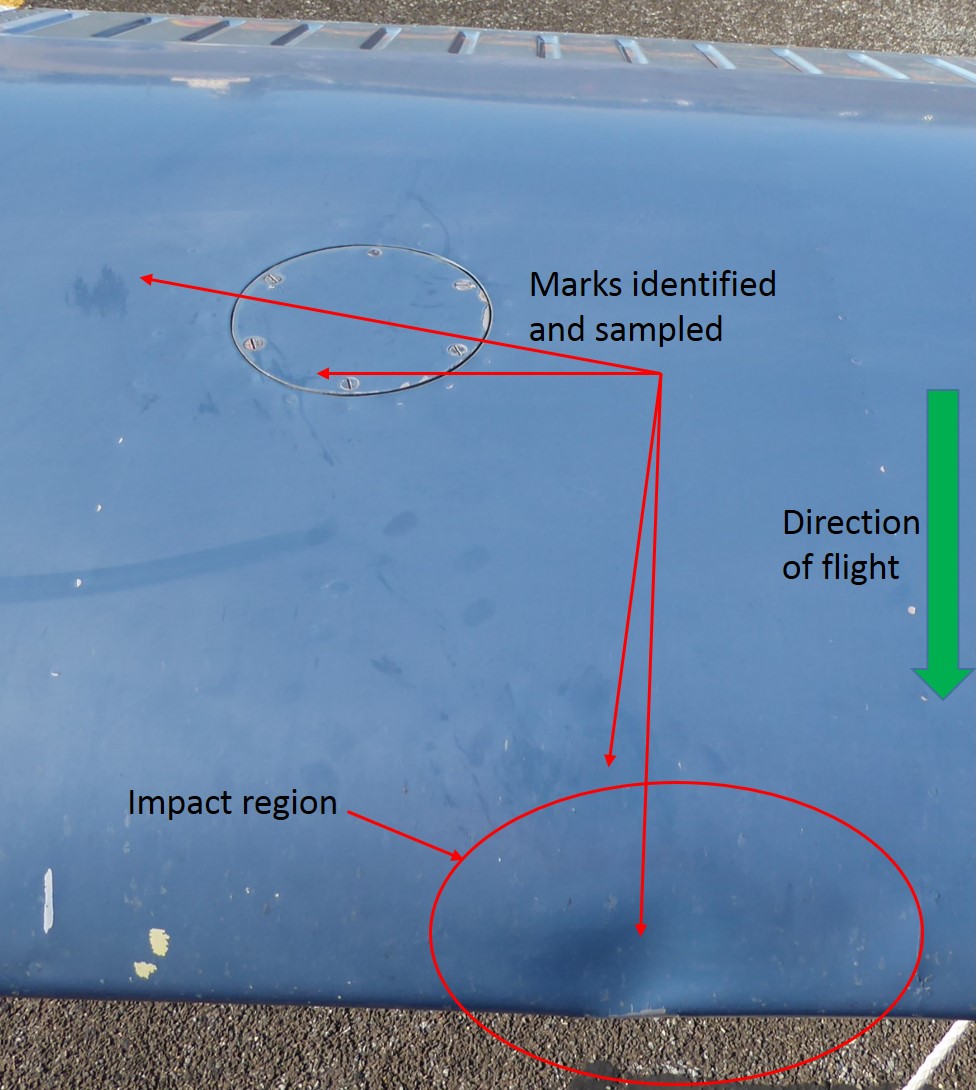The pilot advised air traffic control that, during final approach to runway 03L at Parafield Airport at about 1830 Central Standard Time, the aircraft struck an object, which was potentially a remotely piloted aircraft (RPA). The aircraft sustained minor damage to the right wing. Initial search of the area under the flightpath did not locate the object.
Updated: 21 July 2017
Section 21 (2) of the Transport Safety Investigation Act 2003 (TSI Act) empowers the Australian Transport Safety Bureau (ATSB) to discontinue an investigation into a transport safety matter at any time. Section 21 (3) of the TSI Act requires the ATSB to publish a statement setting out the reasons for discontinuing an investigation.
At about 1800 Central Standard Time[1] on 11 July 2017, a SOCATA TB-10 Tobago aircraft, registered VH-YTG, was conducting a scheduled night flying lesson at Parafield airport, near Adelaide, South Australia. On final approach and at about 500 ft above ground level, the aircraft’s right wing struck an object. The instructor heard a loud thud and the right wing suddenly dropped. He radioed the control tower requesting a full stop landing, as they might have hit a bird.
After landing, the instructor conducted an inspection of the aircraft and found minor damage to the right wing. As there were no visible signs of biological matter, he contacted the control tower and reported the incident as a possible drone strike.
Figure 1: VH-YTG showing damage

Source: ATSB
The ATSB conducted an inspection of the aircraft, and swab samples of the impact area were taken by the airport operator, and sent to the Australian Museum for DNA testing. The subsequent DNA test results indicated the sample was most consistent with that of a grey-headed flying-fox, from the bat family. The ATSB has assessed that there is little potential for the enhancement of transport safety through further investigation of this occurrence. The ATSB has discontinued the investigation.
__________
Updated: 13 July 2017
ATSB investigators have concluded their examination of VH-YTG. Damage to the leading edge of the right wing was identified (Figure 1). The impact damage appeared to be generally smooth in nature, with no sharp impacts or significant scratches identified.
Several smear-type marks were observed in the region of the impact damage and along the upper surface of the wing (Figure 2). Samples of those marks have been taken for analysis with the aim of identifying their origin.
The investigation is continuing.
Figure 1: Leading edge with impact area circled

Source: ATSB
Figure 2: Overhead image highlighting identified surface marks

Source: ATSB
________________
The information contained in this web update is released in accordance with section 25 of the Transport Safety Investigation Act 2003 and is derived from the initial investigation of the occurrence. Readers are cautioned that new evidence will become available as the investigation progresses that will enhance the ATSB's understanding of the accident as outlined in this web update. As such, no analysis or findings are included in this update.


